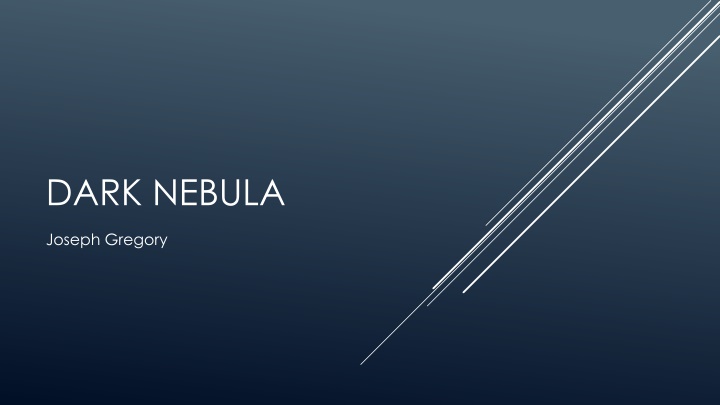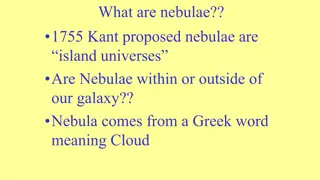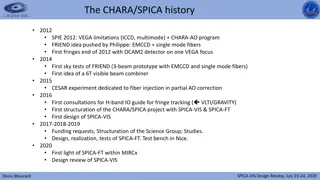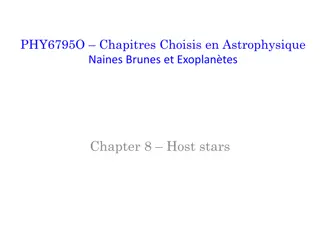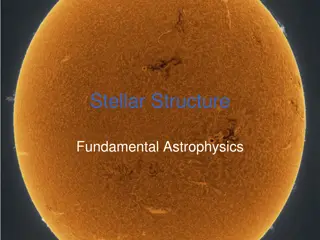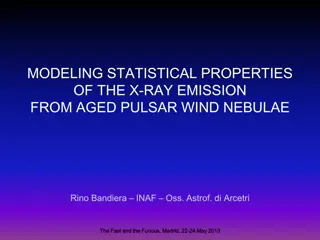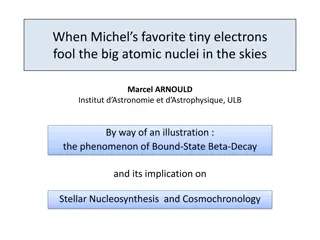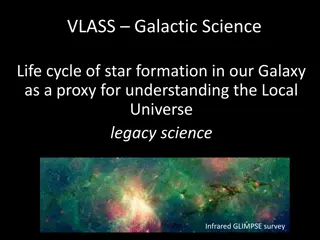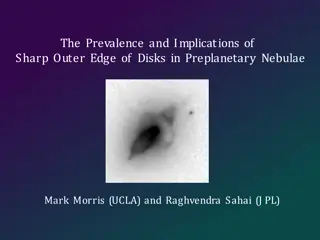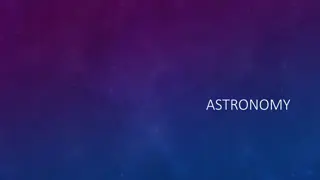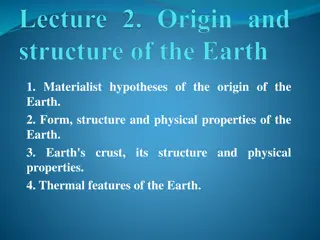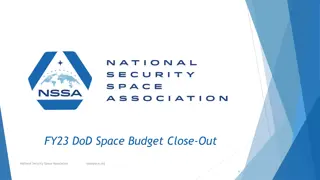Unveiling Dark Nebulae and Stellar Formation in Space
Dark Nebulae like the Coalsack Nebula and Snake Nebula are dense interstellar clouds where light cannot pass through. Comprised of tiny dust particles coated in frozen gases, they serve as precursors to stellar nurseries, where protostars begin to form and evolve. Learn about these enigmatic cosmic structures and the fascinating process of stellar birth within them.
Download Presentation

Please find below an Image/Link to download the presentation.
The content on the website is provided AS IS for your information and personal use only. It may not be sold, licensed, or shared on other websites without obtaining consent from the author.If you encounter any issues during the download, it is possible that the publisher has removed the file from their server.
You are allowed to download the files provided on this website for personal or commercial use, subject to the condition that they are used lawfully. All files are the property of their respective owners.
The content on the website is provided AS IS for your information and personal use only. It may not be sold, licensed, or shared on other websites without obtaining consent from the author.
E N D
Presentation Transcript
DARK NEBULA Joseph Gregory
DARK NEBULA A type of interstellar cloud that is too dense for light to pass through Mostly comprised of tiny dust particles coated in frozen carbon monoxide and nitrogen Irregular form, no defined boundaries Most notable is the Coalsack Nebula Very easily seen against bright Milky Way Serves as a precursor to stellar nurseries Earliest stage of star s development occurs here Protostars begin to coalesce from dust
PROTOSTARS Formation begins in densest region of dark nebula Process lasts about 1 million years for a star of one solar mass (the mass of our sun) Begins when the dust in a molecular cloud first collapses under its own gravity A disk of dense gas forms around the new protostar Energy initially comes not from nuclear fusion, but radiation caused by shocked gas impacting the protostar s surface Ends when the protostar has enough energy to blow back the gas trying to fall in
THE COALSACK NEBULA ESO/S. Brunier Hand Sketch
THE COALSACK NEBULA Located in the Southern Cross Located about 610 light-years from Earth Is about 50 light years in across Angular size of 400x300 arc-minutes Dims starlight behind by an apparent magnitude of 1 to 1.5 Can easily be seen with the naked eye If using telescope best at low magnification Commonly appears in aborigine folklore as an emu Coalsack is head of emu By en:User:Rayd8 - en-wp, CC BY 2.5, https://commons.wikimedia.org/w/index.php?curid= 5444580
B72 SNAKE NEBULA By en:user:Friendlystar - English Wikipedia, CC BY 3.0, https://commons.wikimedia.org/w/index.php?curid= 4986855 Hand Sketch
B72 SNAKE NEBULA Located in Ophiuchus constellation (pictured right) Located about 650 light-years from Earth Is about 5 light-years across Angular size of about 37x17 arc-minutes Recognizable by distinctive snakelike S shape Requires clear dark skies to be seen Can be seen well with medium sized telescopes (4 -6 ) By IAU and Sky & Telescope magazine (Roger Sinnott & Rick Fienberg) - [1], CC BY 3.0, https://commons.wikimedia.org/w/index.php?curid= 15407822
HORSEHEAD NEBULA By Ken Crawford, CC BY-SA 3.0, https://commons.wikimedia.org/w/index.php?curid= 31584618 Hand sketch
B33 HORSEHEAD NEBULA Located South of Alnitak in Orion s Belt Located about 1,500 light-years from Earth is about 7 light-years in diameter Angular size of about 8x6 arc-minutes Distinctive horsehead shape eyecatching because it is juxtaposed against other bright nebulae Bright spots in the base are young stars forming in its stellar nursery Best seen in clear dark skies By IAU and Sky & Telescope magazine (Roger Sinnott & Rick Fienberg) - [1], CC BY 3.0, https://commons.wikimedia.org/w/index.php? curid=15407823 Can be seen well through a 10 telescope
REFERENCES https://www.eso.org/public/images/potw1612a/ https://en.wikipedia.org/wiki/Dark_nebula https://en.wikipedia.org/wiki/Protostar#Protostellar_evolution https://en.wikipedia.org/wiki/Snake_Nebula https://en.wikipedia.org/wiki/Horsehead_Nebula https://www.britannica.com/science/star-astronomy/Star-formation-and-evolution#ref52848 https://www.britannica.com/place/Coalsack https://freestarcharts.com/orion
